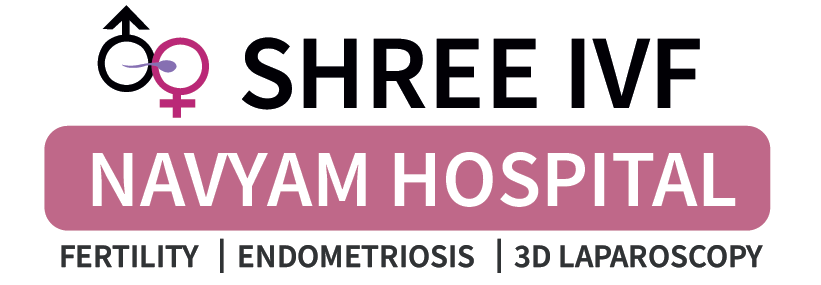
What is Adenomyosis?
Adenomyosis is a condition where cells from the uterus lining grow into the uterus muscle. This condition is often confused with endometriosis, but they are quite distinct.
While endometriosis involves endometrial tissue growing outside the uterus, adenomyosis involves this tissue growing within the uterus’s muscle layers.
🌸 Adenomyosis Treatment: Advanced Approaches and Modern Therapies
Adenomyosis is a chronic condition where the endometrial tissue (the inner lining of the uterus) grows into the uterine muscle (myometrium). This results in an enlarged uterus, heavy menstrual bleeding, and intense pelvic pain. Although not life-threatening, it can significantly affect a woman’s quality of life and fertility.
While traditional treatments focused on pain management and hormone therapy, modern medicine offers advanced therapeutic approaches, including focal and globular adenomyosis management, microwave ablation, and fiscal adenomyosis treatments.
🔍 Symptoms of Adenomyosis
The symptoms of adenomyosis vary but commonly include:
- Heavy or prolonged menstrual bleeding (menorrhagia).
- Severe menstrual cramps (dysmenorrhea).
- Pelvic pain and bloating.
- Pain during intercourse.
- Enlarged uterus, sometimes mistaken for fibroids.
- Infertility or recurrent miscarriages.
✅ Diagnosis of Adenomyosis
Doctors diagnose adenomyosis using:
- Pelvic ultrasound: To detect uterine thickening or enlargement.
- MRI scan: Provides a clear image of tissue invasion into the myometrium.
- Biopsy: Rarely performed but may confirm the condition.
🌟 Advanced Treatment Approaches for Adenomyosis
1. Focal Adenomyosis Treatment
Focal adenomyosis refers to localized areas of endometrial tissue invading the myometrium, forming nodules or cysts.
✅ Treatment Options:
- Hormonal therapy:
- Progestins and GnRH agonists to reduce estrogen levels and slow the growth of adenomyotic tissue.
- Uterine artery embolization (UAE):
- Reduces blood supply to the adenomyotic area, shrinking it.
- Focal excision surgery:
- Involves removing the adenomyotic nodule while preserving the uterus.
- Suitable for women aiming for future fertility.
- MRI-guided focused ultrasound (MRgFUS):
- Uses high-intensity ultrasound waves to destroy adenomyotic tissue without invasive surgery.
2. Globular Adenomyosis Treatment
Globular adenomyosis is a diffuse form of the condition, where the endometrial tissue is spread throughout the uterus, making it more difficult to treat.
✅ Treatment Options:
- Hormonal Therapies:
- Combined oral contraceptives (COCs) or progestin-only therapy to reduce menstrual bleeding.
- GnRH agonists to suppress estrogen and slow the progression.
- Endometrial ablation:
- A minimally invasive procedure that destroys the uterine lining.
- Reduces heavy bleeding but not suitable for women seeking future pregnancies.
- Hysterectomy:
- The definitive treatment for severe cases.
- Removes the uterus, offering a permanent solution.
3. Fiscal Adenomyosis of Outer Myometrium
Fiscal adenomyosis affects the outer layer of the myometrium, making it more challenging to diagnose and treat.
✅ Treatment Approaches:
- Laparoscopic surgery:
- Minimally invasive removal of the affected area while preserving the uterus.
- Ideal for women wanting to maintain fertility.
- High-intensity focused ultrasound (HIFU):
- Targets and destroys adenomyotic tissue without damaging surrounding tissue.
- Microwave ablation therapy:
- Uses microwave energy to heat and destroy adenomyotic tissue.
- Less invasive with faster recovery.
4. Microwave Ablation for Adenomyosis
Microwave ablation is an emerging technique for treating adenomyosis. It is a minimally invasive, thermal-based therapy that uses microwave energy to destroy adenomyotic tissue.
✅ How It Works:
- The procedure uses a thin catheter inserted into the uterus.
- Microwave energy is delivered to heat and destroy the adenomyotic tissue.
- The treatment is precise and targeted, minimizing damage to healthy tissue.
- Often performed under local anesthesia.
✨ Benefits of Microwave Ablation:
- Minimally invasive with shorter recovery times.
- Reduces pain and heavy bleeding significantly.
- Preserves the uterus, making it suitable for women seeking fertility.
🌟 Conventional Treatment Options for Adenomyosis
While advanced therapies offer effective relief, conventional treatments are still widely used:
✅ Hormone Therapy:
- Birth control pills or progestin-only therapy: Helps regulate the menstrual cycle and reduce pain.
- Gonadotropin-releasing hormone (GnRH) agonists: Temporarily induce a menopausal state, reducing symptoms.
✅ Pain Management:
- NSAIDs (Non-steroidal anti-inflammatory drugs): Relieve cramping and pelvic pain.
- Pain-relief medications: For managing severe symptoms.
✅ Fertility Preservation:
- Women with adenomyosis planning for future pregnancies may opt for:
- Egg freezing (oocyte cryopreservation).
- Embryo freezing before undergoing aggressive treatments.
💡 Lifestyle and Management Tips
While there is no definitive cure for adenomyosis, lifestyle modifications can help alleviate symptoms:
- Healthy Diet:
- Anti-inflammatory foods like leafy greens, berries, and omega-3s.
- Avoid processed foods and excess caffeine.
- Regular Exercise:
- Improves circulation and reduces inflammation.
- Alleviates pelvic pain.
- Stress Management:
- Yoga, meditation, and relaxation techniques.
- Heat Therapy:
- Use of heating pads to ease cramps and pelvic pain.
🌷 Key Takeaway
Adenomyosis is a chronic uterine condition that requires personalized treatment approaches. While traditional hormonal therapies and pain management offer symptom relief, advanced procedures like microwave ablation, laparoscopic surgery, and MRgFUS provide effective and long-lasting solutions.
For women seeking fertility preservation, minimally invasive procedures and hormone regulation can significantly improve outcomes. Early diagnosis, effective treatment, and lifestyle modifications can help women manage adenomyosis and improve their overall quality of life. 🌟

